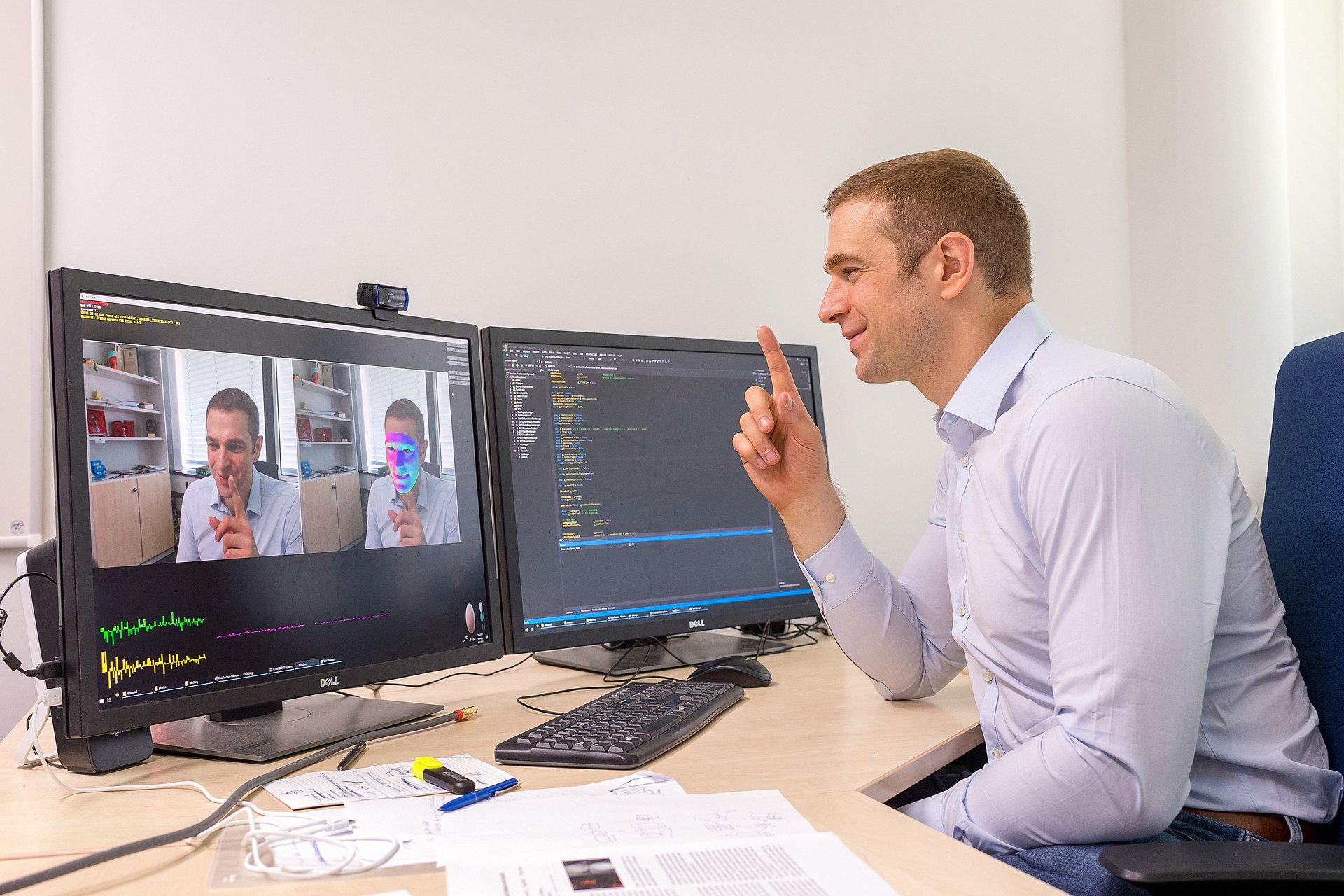FaceForensics software delivers best performance in detecting fake videos
Spotting fake videos with artificial intelligence

Last year a video clip featuring Barack Obama created quite a stir. It seemed to show the ex-president calling his successor Donald Trump "a total and complete dipshit". Ultimately, the people behind the clip admitted that it was no more than a highly convincing fake. Using graphic processing, they had superimposed the facial movements of another person onto a video showing the former US president, making him appear to say things that he had probably never said in quite that way. It is now possible to perform this kind of trickery even in real time. Videos can be generated to match pre-recorded audio files, or still photographs can be artificially animated – with potentially serious economic or social consequences.
„With our research, we are pursuing the objective of making it easier to spot fake videos online in the future.”— Matthias Niessner, professor for Visual Computing
"Spotting fake videos has proved especially tricky in social media, where they are generally uploaded as compressed, low-resolution images," says Prof. Matthias Niessner. "The same methods used to manipulate video content are also capable of detecting fake content with a high degree of accuracy – even when the image resolution is poor."
Large pool of training data for neural networks
For artificial intelligence to decide whether a video is the product of manipulation, it must be able to recognize the patterns that occur in faked content. To learn the recurring elements of such content, neural networks need to be fed enormous volumes of fake videos. In the past, researchers had to manipulate video material manually using image or video processing software. As a result, they lacked the required volumes of training data. Using new deep learning methods and graphic processes, Prof. Niessner has succeeded for the first time in building an extensive data pool, mainly with automated methods, including, among other tools, his own Face2Face software, which permits the real-time transfer of facial expressions from one person to another. With the new data pool, he was then able to train his FaceForensics (++) algorithm with more than half a million frames from over a thousand faked videos.
Focus on faces
"When we trained the neural networks with our data pool, we placed special emphasis on the facial regions in the still images," says Andreas Rössler, a researcher in the TUM Visual Computing Lab. "Thanks to that approach, FaceForensics (++) recognizes deep fakes and videos manipulated with Face2Face or FaceSwap better than any other currently available software." FaceForensics (++) also outperforms experienced experts. According to Prof. Niessner's study, non-experts correctly identify highly compressed videos as fake only about 50% of the time – in other words, not much better than pure chance. FaceForensics (++), by contrast, accurately classifies 78% of the frames, and thus the video clips, as real or fake.
"With our research, we are pursuing the objective of making it easier to spot fake videos online in the future," says Prof. Niessner. His team is therefore making FaceForensics (++) available to communities in the fields of AI, graphics, computer vision and digital forensics. With the data created by the team, the reliability of other detection methods can also be tested and compared. FaceForensics (++) is already being used by around 200 institutions.
Prof. Niessner developed FaceForensics in cooperation with scientists at Università degli Studi di Napoli Federico II in Italy and the Friedrich-Alexander Universität Erlangen-Nürnberg. The project received financial support from the AI Foundation, which also created a browser plugin for FaceForensics. The plugin automatically scans images and videos encountered by users online to detect possible AI-based manipulation.
Technical University of Munich
Corporate Communications Center
- Lisa Pietrzyk
- lisa.pietrzyk@tum.de
- +49 89 289-10516
- presse@tum.de
- Teamwebsite
Contacts to this article:
Prof. Dr. Matthias Nießner
Technical University of Munich
Chair for Visual Computing
Phone: +49 89 289-19556
niessner@tum.de
niessnerlab.org